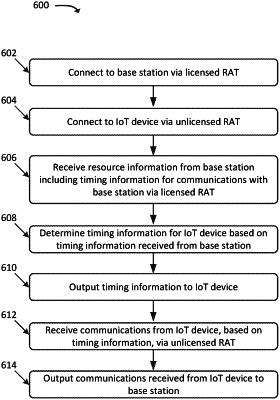| CPC H04W 74/0841 (2013.01) [H04W 72/0446 (2013.01); H04W 72/1273 (2013.01); H04W 74/008 (2013.01)] | 20 Claims |

|
1. A first device, comprising:
one or more processors configured to:
wirelessly output, prior to connecting to a base station of a radio access network (“RAN”) via a first radio access technology (“RAT”), first presence information via a second RAT, wherein the first presence information includes a first Service Set Identifier (“SSID”);
connect to the base station of the RAN via the first RAT;
wirelessly output, based on connecting to the base station via the first RAT, second presence information via the second RAT, wherein the second presence information includes a second SSID that is different from the first SSID;
connect to a second device via the second RAT;
receive resource information from the base station, the resource information including first timing information for communications from the first device to the base station via the first RAT;
determine second timing information associated with the second device based on the first timing information;
output an indication of the second timing information to the second device, wherein the second device utilizes the second timing information to output communications to the first device via the second RAT; and
output the communications received from the second device to the base station via the first RAT.
|